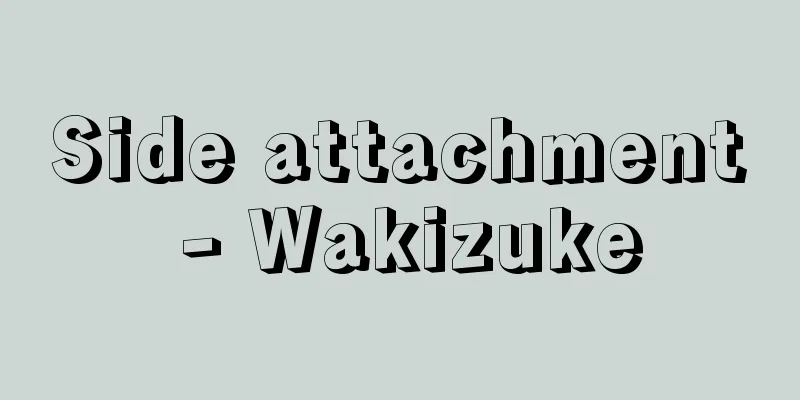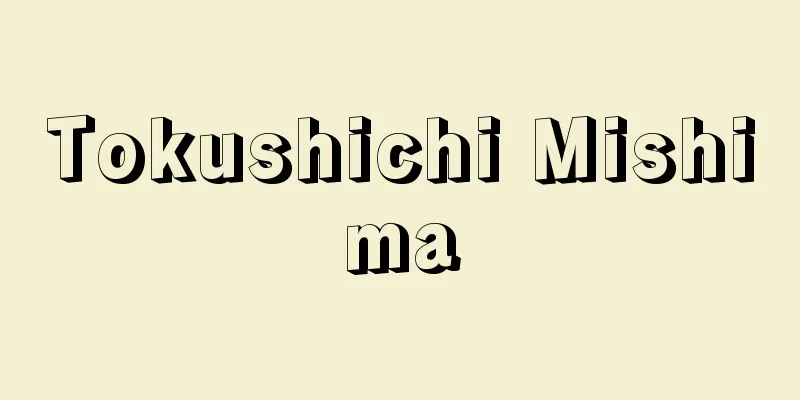Quiver - Ebira

|
[1]① A box-shaped storage device worn on the waist for inserting arrows. A box called a "hodate" is attached under the long, narrow backboard on which the arrows are placed, and a reed called an "osa" is placed inside the box, into which the arrowheads are inserted. A backboard that is not made of wood but is made into a frame is called a "hatate," and when the inside is sewn together with a "tsuzurafuji " ( fence ), it is called a "nakanuisoo." A cord for tying the arrows together is attached to the shoulder of the "hatate ," and this is used as the cord for the arrow handle . There are various types of quivers, including kudzu quivers, reverse cheek quivers, bamboo quivers, square quivers, leather quivers, and willow quivers. ※Heike (early 13th century) 4 "He shot twenty-four arrows, (abbreviated) shooting twelve enemies dead and wounding eleven, leaving one arrow remaining in the quiver." ② A prop used in Noh theater. Several arrows tied together with a string to resemble a quiver. ③ One form of Renku. Modeled after the number of arrows in a quiver, each volume is made up of twenty-four lines, with the first six lines on the front and the back, and the last six lines on the front and the back, making up a total of twenty-four lines. [Haikai, Dokugetsuko (1828)] [2] Noh play. Second piece. Various schools. Author unknown. Based on the story of Kajiwara Genta Kagesue, who fought bravely with a plum branch stuck in his quiver during the Battle of Ikuta Forest in Settsu in the spring of 1184 ( Juei 3 ). Old name: "Quiver Plum." [Glossary] (1) The character for '箙' is given the reading 'yanaghi' in 'Jukanhon Wamyosho-5', 'Iroha Jiruisho' and other sources. 'Yanaghi' was used for ceremonial purposes at the Imperial Court during the Heian period. It is believed that the word 'ebira' came to refer to those used by the guards and samurai from around the end of the Heian period. (2) From the description in "Konjaku-28," it seems that the term "yanaghi" refers to both the arrows and the container, while "ebira" refers only to the container for the arrows. However, it seems that the two were later confused, and in the Yi-Rin-hon-Setsuyo-shu, both "huang" and "yanagu" are read as "ebira." Source: The Selected Edition of the Japanese Language Dictionary About the Selected Edition of the Japanese Language Dictionary Information |
|
[1]① 矢をさし入れて腰に付ける箱形の容納具。矢をもたせる細長い背板の下に方立(ほうだて)と呼ぶ箱をつけ、箱の内側に筬(おさ)と呼ぶ簀子(すのこ)を入れ、これに鏃(やじり)をさしこむ。背板を板にせずに枠にしたものを端手(はたて)といい、中を防己(つづらふじ)でかがって中縫苧(なかぬいそ)という。端手の肩に矢を束ねて結ぶ緒をつけ、矢把(やたばね)の緒とする。葛箙、逆頬箙、竹箙、角箙、革箙、柳箙などの種類がある。※平家(13C前)四「二十四刺したる矢を、〈略〉射る、矢庭に敵十二人射殺し、十一人に手負うせたれば、箙に一つぞ残りたる」② 能楽用の小道具。数本の矢を紐で束ね、箙に擬したもの。③ 連句の形式の一つ。箙にさす矢の数にかたどり、一巻二四句から成るもので、初折の表六句と裏六句、名残の表六句と裏六句、合わせて二四句を一連とした。〔俳諧・独稽古(1828)〕[2] 謡曲。二番目物。各流。作者不詳。寿永三年(一一八四)の春、摂津の生田の森の合戦において、梶原源太景季が箙に梅の枝をさして奮戦した故事に取材したもの。古名「箙の梅」。[語誌](1)「箙」の字は「十巻本和名抄‐五」「色葉字類抄」などでは「やなぐひ」の訓が付けられている。「やなぐひ」は、平安時代には朝廷で儀仗用などに用いられていた。平安時代末頃から衛府の随身や武士の使用していたものを指して「えびら」と呼ぶようになったものと思われる。 (2)「今昔‐二八」の記述より矢と容器とを含めて「やなぐひ」、矢を入れる容器だけを「えびら」と区別していたものと思われる。しかし、後には混同されることもあったようで、易林本節用集では、「胡簶」「箙」ともに「えびら」と読まれている。 出典 精選版 日本国語大辞典精選版 日本国語大辞典について 情報 |
<<: Epilogue - Epilogue (English spelling)
Recommend
Hassaku
〘Noun〙 ("Saku" means the first day of th...
Nielsen, A. (English spelling) NielsenA
…Just as Italy created the screen diva and became...
The superiority of the government and the inferiority of the people
In general, bureaucrats are considered to be noble...
IUBS - IUBS
…International Astronomical Union (abbreviated as...
Ephippianthus
...A small terrestrial orchid found somewhat rare...
control surface
…Automatic steering device [Masataka Fujino] [Air...
Dithizon (English spelling)
One of the most representative organic reagents. ...
Inasa [town] - Inasa
A former town in Inasa County, western Shizuoka Pr...
Falconet - Étienne-Maurice Falconet
French sculptor and art theorist. Born in Paris, ...
Brown, WL
…A term proposed by Brown WL Brown et al. (1970) ...
émail (English) email
…Abbreviation of Shippo-yaki. Also called enamel,...
Toda [village] - Heda
An old village in Tagata County, facing Suruga Bay...
Western Memoirs - Seiyo Kibun
A book written by Arai Hakuseki. In 1708 (5th yea...
Nogaret, G.de (English spelling) NogaretGde
…In 1300, he held a grand Jubilee celebration, wh...
Agency declaration - Challenge
〘Noun〙① One of the styles of ancient documents. An...







![Kotonami [town] - Kotonami](/upload/images/67cb9802a27fa.webp)
![Kasuya [town] - Kasuya](/upload/images/67cb349770333.webp)
